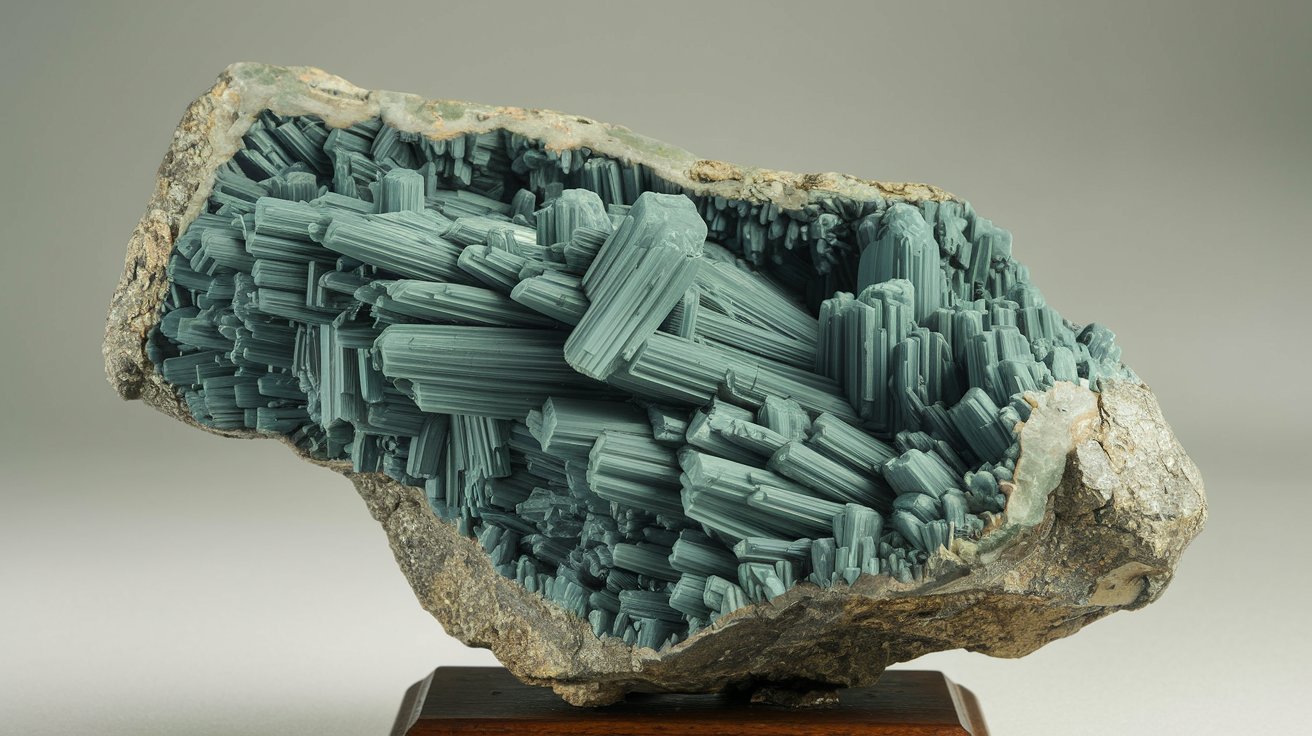
Clinoclase is a captivating mineral that often catches the eye with its deep blue-green hues. But what exactly makes this mineral so special? Clinoclase is a rare copper arsenate mineral that forms in the oxidation zones of copper deposits. Its striking color and unique crystal formations make it a favorite among mineral collectors. Found in places like Cornwall, England, and Arizona, USA, this mineral is not just beautiful but also tells a story of geological processes. Whether you're a seasoned geologist or just curious about the natural world, learning about clinoclase can offer a glimpse into the fascinating complexities of Earth's mineralogy. Ready to dive into 40 intriguing facts about this mineral? Let's get started!
Key Takeaways:
- Clinoclase is a stunning blue-green mineral found in copper-rich environments, valued by collectors for its beauty and rarity. It can also provide valuable information about the presence of copper deposits.
- When collecting clinoclase, handle it with care, store it in a dry environment, and avoid harsh cleaning chemicals. Labeling specimens with locality information adds value, and joining mineral clubs can provide trading opportunities.
What is Clinoclase?
Clinoclase is a fascinating mineral known for its striking blue-green color. It belongs to the arsenate mineral group and is often found in copper-rich environments. Let's dive into some intriguing facts about this mineral.
-
Clinoclase's name comes from the Greek words "klino" (incline) and "klasis" (fracture), referring to its inclined fracture planes.
-
It was first discovered in 1830 in Cornwall, England, a region famous for its rich mineral deposits.
-
Clinoclase typically forms in the oxidation zones of copper deposits, where it can be found alongside other secondary copper minerals.
-
The mineral's chemical formula is Cu₃(AsO₄)₂·3H₂O, indicating it contains copper, arsenic, oxygen, and water.
-
Its crystal system is monoclinic, meaning it has three unequal axes with one inclined angle.
Physical Properties of Clinoclase
Understanding the physical properties of clinoclase can help identify it in the field. Here are some key characteristics.
-
Clinoclase has a Mohs hardness of 2.5 to 3, making it relatively soft compared to other minerals.
-
Its specific gravity ranges from 4.3 to 4.4, which is considered quite dense for a mineral.
-
The mineral exhibits a vitreous to sub-adamantine luster, giving it a shiny, glass-like appearance.
-
Clinoclase crystals are typically prismatic or acicular, meaning they can appear as elongated prisms or needle-like structures.
-
It has a perfect cleavage in one direction, which means it can easily split along a specific plane.
Color and Appearance
Clinoclase's color and appearance make it a favorite among mineral collectors. Let's explore these aspects.
-
The mineral's color ranges from deep blue to blue-green, often with a striking, vivid hue.
-
Clinoclase can appear translucent to opaque, depending on the quality and thickness of the crystals.
-
When viewed under polarized light, clinoclase can exhibit pleochroism, showing different colors from different angles.
-
It often forms in radiating or fibrous aggregates, creating stunning visual patterns.
-
Clinoclase can sometimes be found as crusts or coatings on other minerals, adding to its visual appeal.
Occurrence and Locations
Clinoclase is found in various locations around the world. Here are some notable occurrences.
-
Cornwall, England, remains one of the most famous locations for clinoclase specimens.
-
The United States has several notable clinoclase localities, including Arizona, Nevada, and Utah.
-
In Australia, clinoclase can be found in the copper mines of New South Wales and South Australia.
-
Other countries with significant clinoclase deposits include Germany, Austria, and Namibia.
-
The mineral is often associated with other copper minerals like malachite, azurite, and brochantite.
Uses and Significance
While clinoclase is not a major industrial mineral, it has some interesting uses and significance.
-
Clinoclase is primarily valued by mineral collectors for its beauty and rarity.
-
It is sometimes used in educational settings to teach students about mineralogy and crystallography.
-
The mineral's vibrant color makes it a popular choice for display in museums and private collections.
-
Clinoclase can provide valuable information about the geochemical conditions of the environments where it forms.
-
It serves as an indicator mineral for the presence of copper deposits, aiding in mineral exploration.
Chemical Properties
The chemical properties of clinoclase are essential for understanding its formation and stability.
-
Clinoclase is an arsenate mineral, meaning it contains arsenic in its chemical structure.
-
The mineral can alter to other copper arsenates over time, depending on environmental conditions.
-
It is relatively stable under normal atmospheric conditions but can decompose in acidic environments.
-
Clinoclase can form through the oxidation of primary copper minerals like chalcopyrite and bornite.
-
The presence of water in its structure makes it a hydrated mineral, which can affect its stability and appearance.
Interesting Facts
Here are some additional interesting facts about clinoclase that you might not know.
-
Clinoclase is often fluorescent under ultraviolet light, glowing a bright green color.
-
The mineral's name has been used in various scientific publications and studies on mineralogy.
-
Clinoclase crystals can sometimes reach several centimeters in length, though most are much smaller.
-
It has been featured in several mineralogical exhibitions and shows around the world.
-
The mineral's unique properties make it a subject of interest for researchers studying copper deposits.
Collecting Clinoclase
For those interested in collecting clinoclase, here are some tips and considerations.
-
Due to its softness, clinoclase should be handled with care to avoid damage.
-
Specimens should be stored in a dry environment to prevent alteration or decomposition.
-
When cleaning clinoclase, avoid using harsh chemicals that could damage the mineral.
-
Labeling specimens with their locality information can add value and context to your collection.
-
Joining mineral clubs or online forums can provide opportunities to trade or purchase clinoclase specimens.
Clinoclase: A Mineral Marvel
Clinoclase, with its striking blue-green hue, stands out in the mineral world. Found in copper-rich areas, this mineral's unique crystal structure and vibrant color make it a favorite among collectors. Its rarity adds to its allure, making each piece a treasure.
Beyond its beauty, clinoclase offers insights into geological processes. Formed through the oxidation of copper ores, it tells a story of Earth's dynamic changes. This mineral also has historical significance, used in ancient times for its copper content.
For enthusiasts, clinoclase is more than just a mineral. It's a window into Earth's past, a piece of natural art, and a testament to the planet's ever-changing nature. Whether you're a seasoned collector or a curious newcomer, clinoclase's charm is undeniable. Dive into the world of minerals and let clinoclase captivate your imagination.
Frequently Asked Questions
Was this page helpful?
Our commitment to delivering trustworthy and engaging content is at the heart of what we do. Each fact on our site is contributed by real users like you, bringing a wealth of diverse insights and information. To ensure the highest standards of accuracy and reliability, our dedicated editors meticulously review each submission. This process guarantees that the facts we share are not only fascinating but also credible. Trust in our commitment to quality and authenticity as you explore and learn with us.


